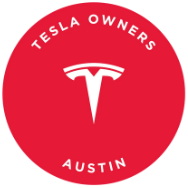When it’s cold outside, the batteries need to work harder to warm up, which can cause more noise. Conversely, when it’s hot outside, the batteries may not need as much warming up, so the noise may be less noticeable.
Additionally, the charging speed can also play a role in the noise level. The faster you charge your Tesla, the more heat is generated, which can lead to more noise. Superchargers, for example, deliver a high amount of power in a short amount of time, causing the batteries to expand rapidly and creating more noise.
Overall, the noise your Tesla makes when charging is completely normal and is just a result of the battery chemistry and construction. As battery technology continues to improve, we may see a decrease in charging noise in the future. In the meantime, enjoy the symphony of sounds that your Tesla makes as it charges up for your next adventure. These chargers typically operate at lower power levels and may result in less audible noise compared to fast-charging options like Superchargers. Additionally, adjusting charging settings in the Tesla app to lower power levels can also help reduce noise levels during charging.
Conclusion
In conclusion, the noise you hear when charging your Tesla is likely a normal part of the charging process and is primarily related to the thermal dynamics and cooling systems in the vehicle. While some noises may be more noticeable in certain conditions, such as cold weather or fast charging, they are generally not indicative of a serious issue like thermal runaway.
By understanding the reasons behind these noises and taking steps to mitigate them, you can continue to enjoy the convenience and efficiency of charging your Tesla without undue concern. If you have any specific concerns or questions about the charging noises in your Tesla, it is always recommended to reach out to Tesla’s customer support for assistance and guidance.
Supercharging your Tesla is a convenient and efficient way to quickly replenish your vehicle’s energy levels. However, due to its rapid energy delivery, it is more likely to produce pronounced noises compared to regular charging methods. If you find yourself wondering why your Tesla is making noise while parked right after charging, it’s essential to consider the environmental and operational factors at play.
After a charging session, cooling operations continue to ensure the battery’s efficiency and longevity. This may involve fan noises as the system works to regulate the temperature of the battery pack. While these noises may be concerning, they are a normal part of the charging process and indicate that your Tesla is functioning as intended.
To address noise concerns effectively, it’s important to seek reassurance through expert advice. Experts can explain that noises such as thunks or pops are natural and indicate that the battery management system is working correctly. Additionally, comparing Tesla’s noise levels to other electric vehicles can provide context and highlight the high-performance battery technology that sets Tesla apart.
If you’re wondering why your Tesla makes a popping noise while charging, it may be more frequent in cold environments where thermal differentials across the battery pack are more prominent. Factors such as charger speed, ambient temperature, and battery state can all influence the noise levels during charging.
Ultimately, understanding the reasons behind these noises can help put Tesla owners at ease. If you notice any abnormal noises or concerns, it’s recommended to contact Tesla support for assistance. By staying informed and proactive, you can ensure that your Tesla remains in optimal condition for years to come.
In conclusion, while supercharging may produce more noticeable noises, it is a necessary component of maintaining your Tesla’s performance and longevity. By addressing concerns and seeking expert advice, you can enjoy the benefits of supercharging without any unnecessary worry about the accompanying sounds.
